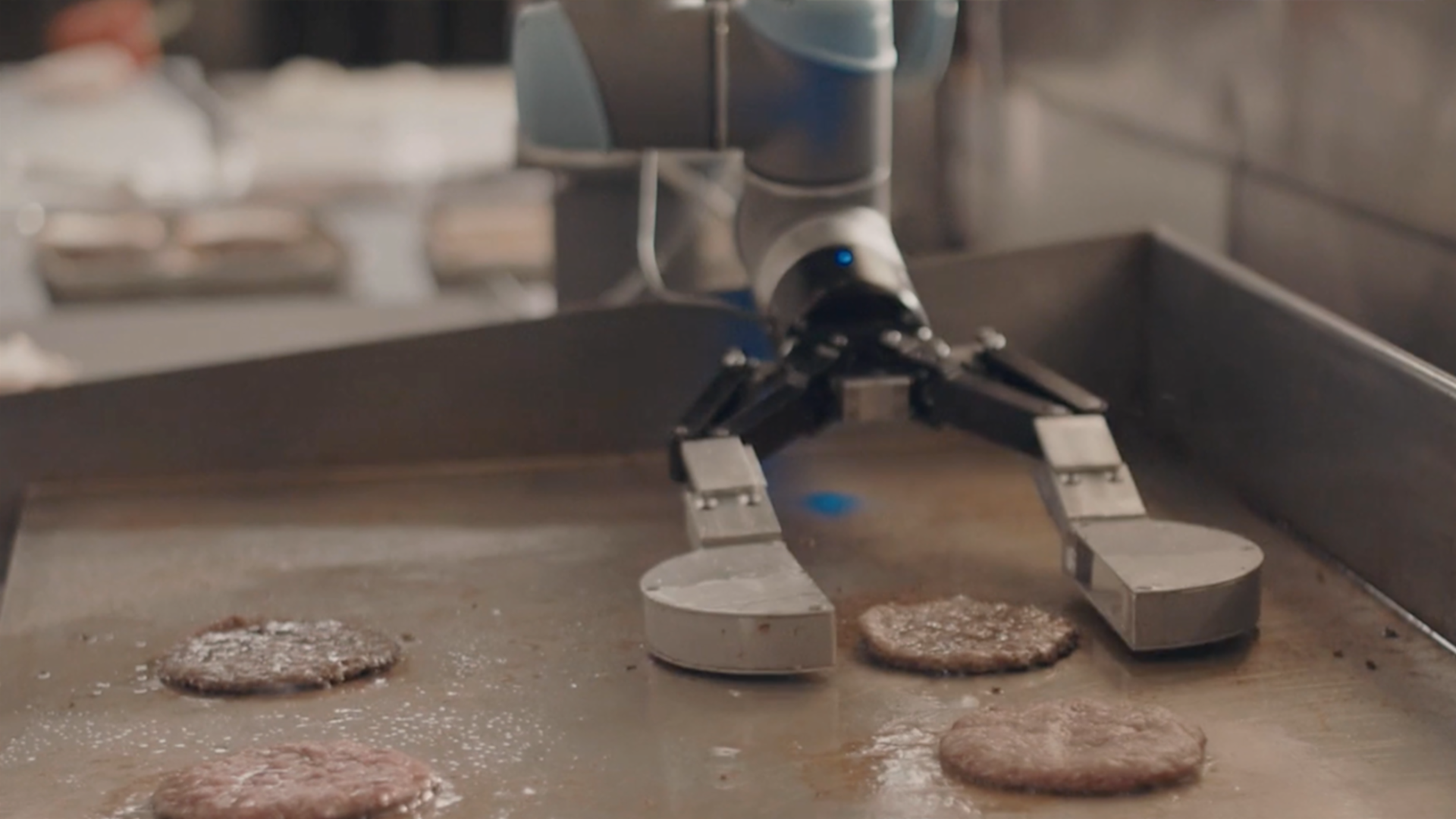
Miso Robotics and Cali Group recently created Flippy, a robot designed to flip burgers using artificial intelligence. Meant to cook burgers at CaliBurger restaurants, the robot rolls out in early 2018 with plans to be in 50 CaliBurgers by the end of 2019.
The robot handles the work of grilling burgers consistently and integrates into CaliBurger's kitchen layout without reconfigurations.
While the robot isn't the first to flip burgers, Miso Robotics is the first to use computer vision and deep-learning software to provide adaptable robots at an affordable cost. Momentum Machines previously unveiled a similar burger-flipping robot, but Flippy's advantage is in his AI software, which allows him to learn from experience. “Though we are starting with the relatively 'simple' task of cooking burgers, our proprietary AI software allows our kitchen assistants to be adaptable and, therefore, can be trained to help with almost any dull, dirty, or dangerous task in a commercial kitchen — whether it's frying chicken, cutting vegetables, or final plating,” said David Zito, Miso Robotics CEO.
John Miller, Chairman of Cali Group, believes that the application of artificial intelligence will allow burgers to be made more quickly, more safely, and with fewer errors. “Our investment in Miso Robotics is part of our broader vision for creating a unified operating system that will control all aspects of a restaurant from in-store interactive gaming entertainment to automated ordering and cooking processes, 'intelligent' food delivery, and real-time detection of operating errors and pathogens,” Miller said.
And, while CaliBurger maintains that the displaced staff will be repurposed in the dining room to engage with customers, one can’t help but wonder what the future holds for employees as robots and artificial intelligence develop.
Of course, restaurant employees aren't the only ones afraid of losing their job to a robot — they're just the latest. Researchers at Oxford University estimate that 47% of U.S. jobs have the potential to be automated within the next 20 years. Jobs that rely on relationships between data and numbers are at risk because they're fairly easily automated. Sales jobs that don't rely on human relationships are also up for grabs, especially if a robot can do those same jobs instantly and for a lower cost. Grant, financial, and sports writers may also be replaced by robots because the things they write are a repurposing of date, though other types of writing are probably safe.
There is also speculation that medical roles will be filled by doctors, which could be great for world health. The United Nations Department of Economic and Social Affairs estimates that the world population will be 11.2 billion by 2100, which very likely leaves us with a shortage of doctors. Luckily, IBM's Watson is already on it, offering advice to hospitals on a variety of cancer treatment plans, and robots are already involved in surgery.
A report published during the Obama administration predicted that workers earning $20 an hour or less have an 83% chance of having their job taken over by a robot in the next five years. For those who make $40 an hour, that chance is still 31%. Whether you’re serving customers at a CaliBurger or working overtime to serve customers this tax season, your job might not be long for this world.
Source: Miso Robotics & PRNewswire
Advertisement
Learn more about Electronic Products Magazine





